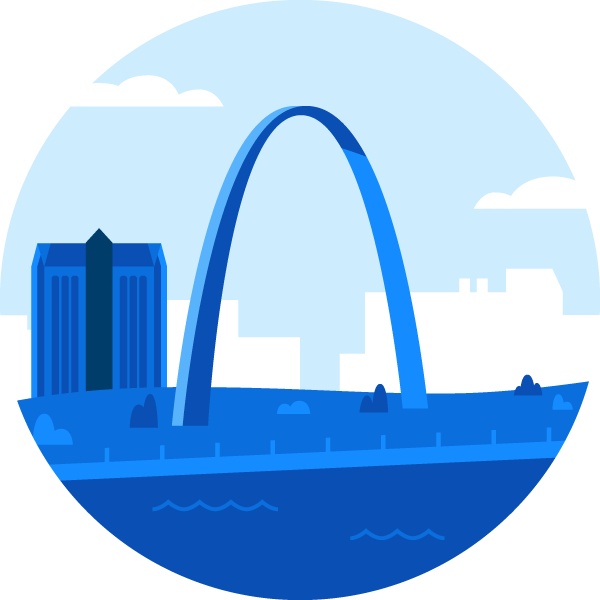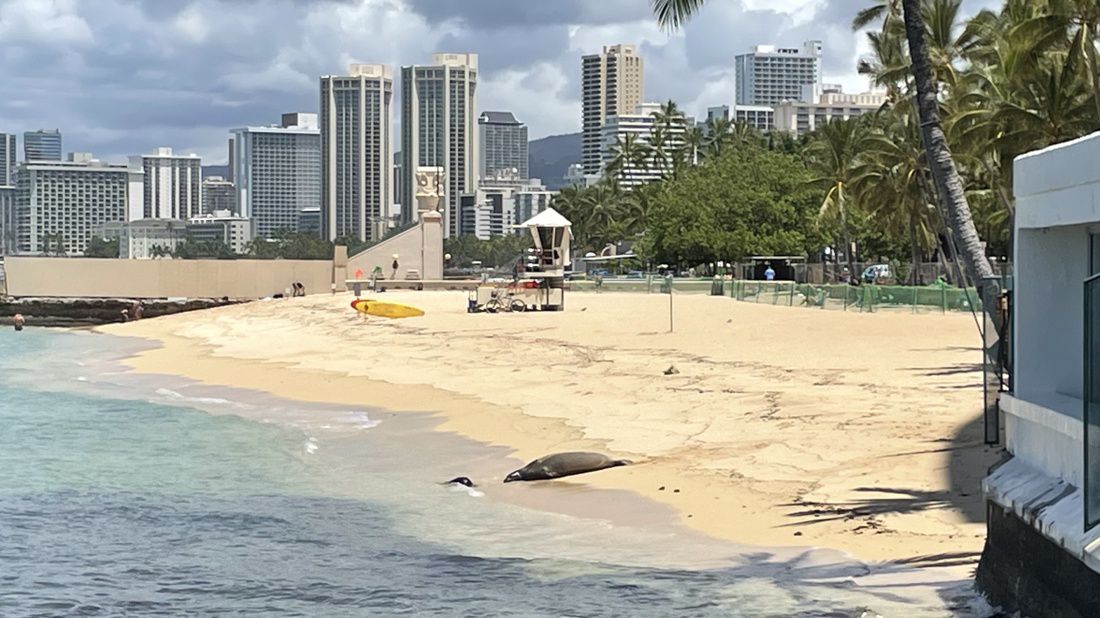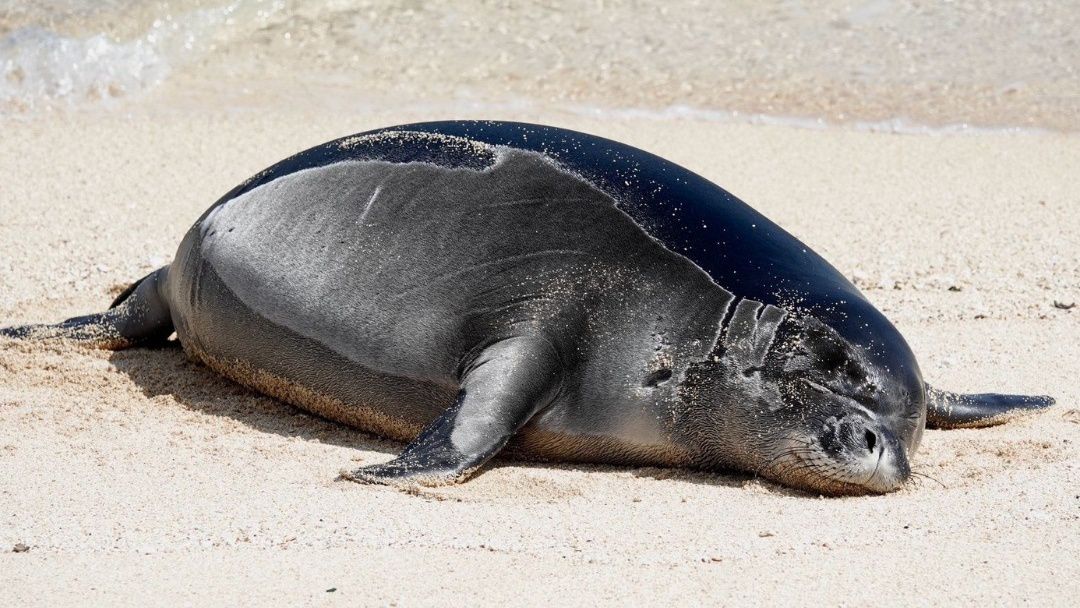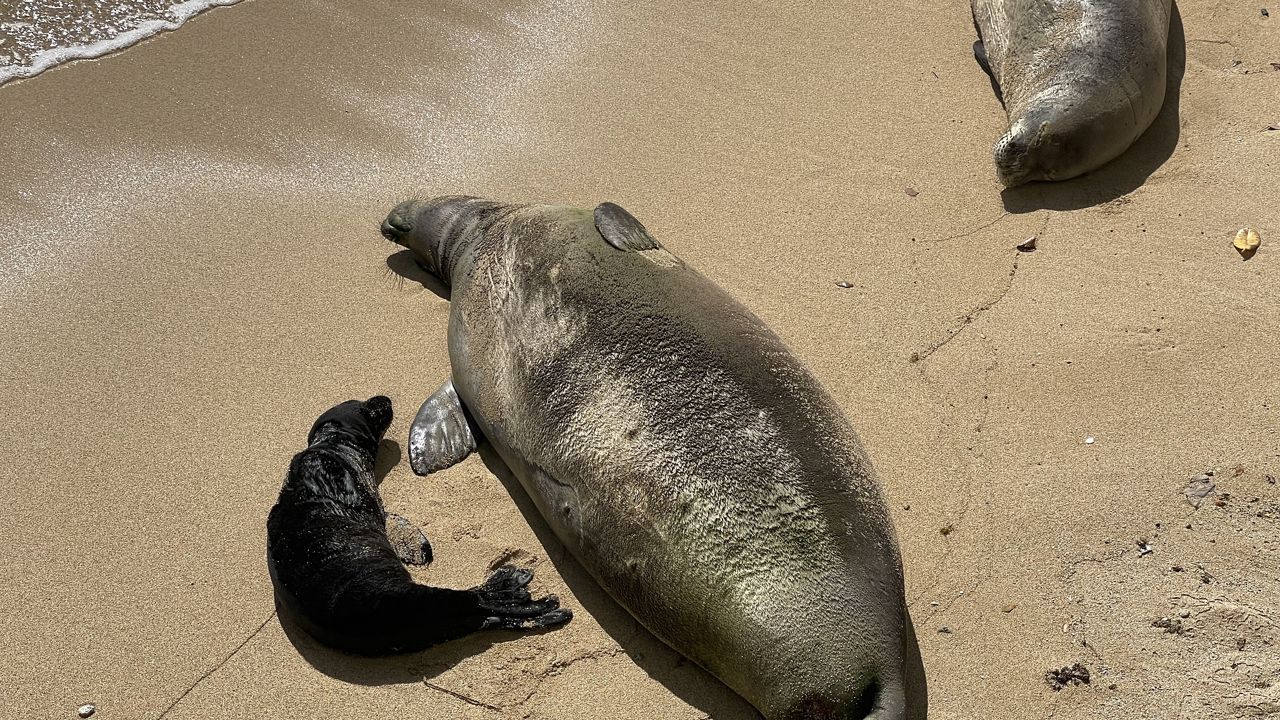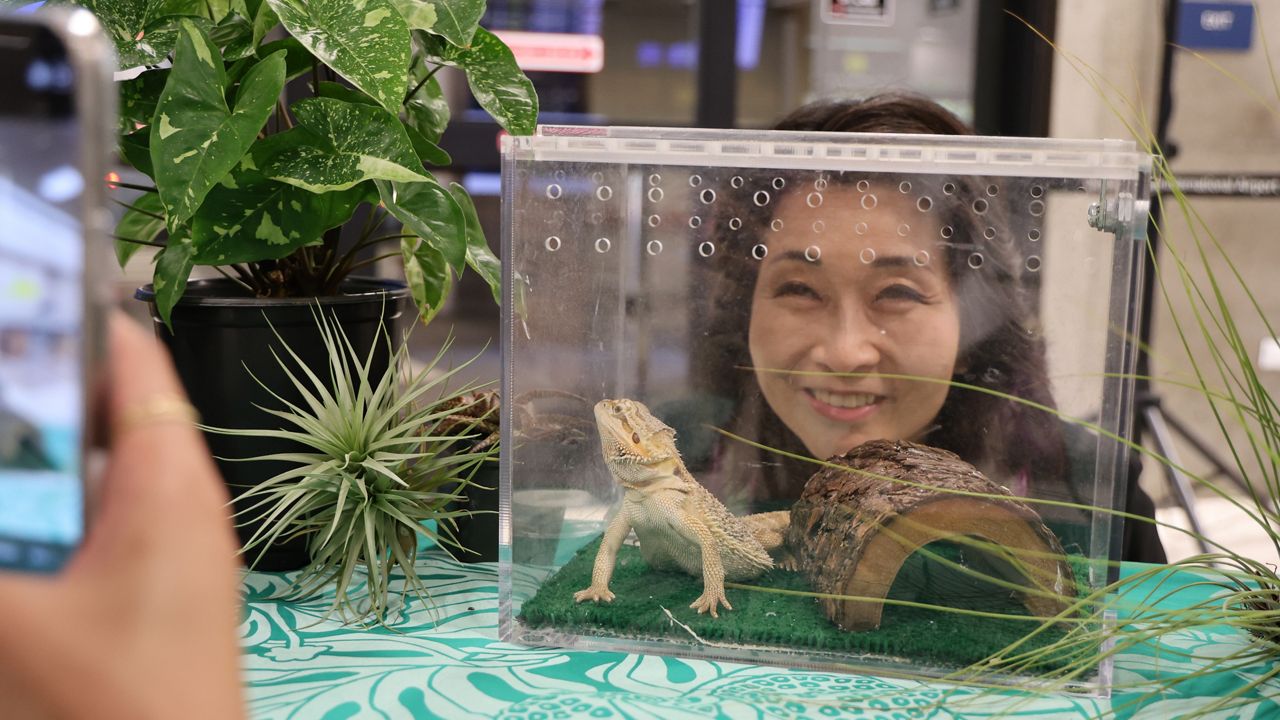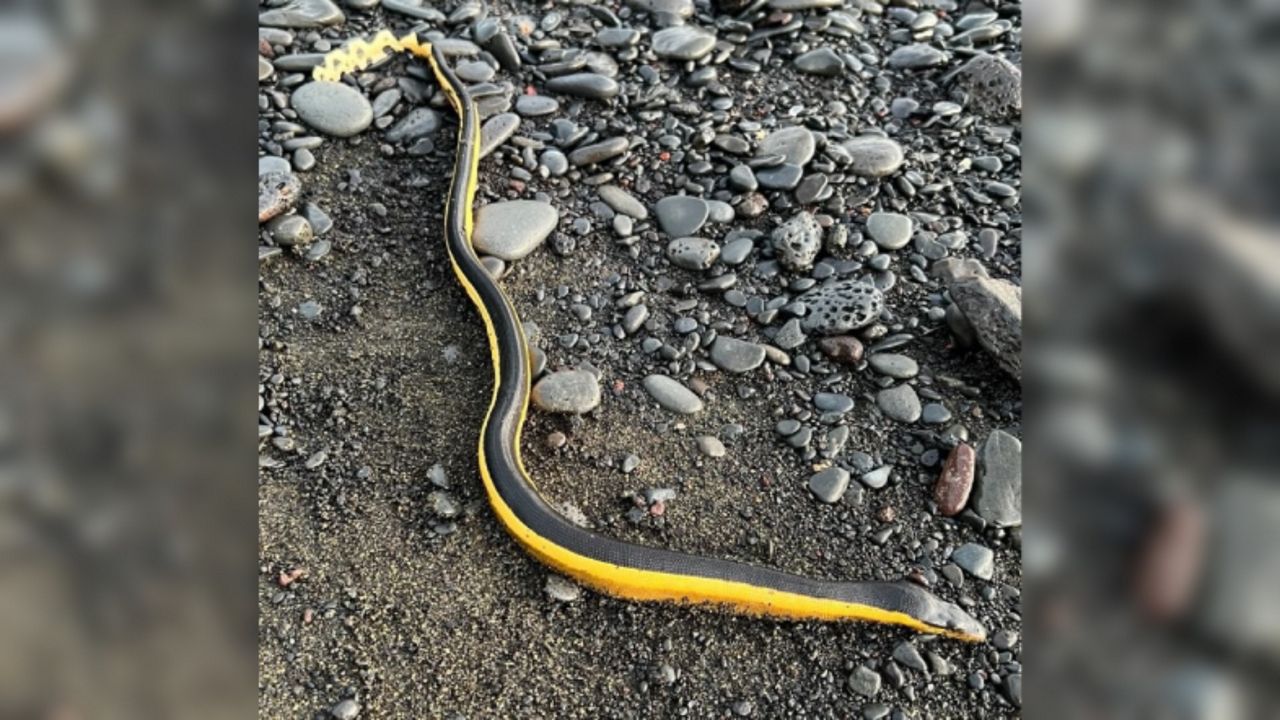HONOLULU — A Hawaiian monk seal named Kaiwi gave birth to a pup on April 14 at Kaimana Beach on the edge of the always-crowded Waikiki.
On Thursday morning, Kaiwi and her six-day-old pup went for their first swim. The pair had the area to themselves, as beach access has been restricted by a temporary fence.
In order to protect the monk seal and beachgoers, the National Oceanic and Atmospheric Administration and state agencies put up a fence around most of the beach — it is much larger than in previous years. About a dozen feet at the mauka side of the sandy shore — between the temporary fence and a rock wall — can still be used by beachgoers to lounge.
There will also be two access lanes for swimmers to enter the ocean. These pathways will be closed when the seals are nearby. If the seals are in the ocean, officers with the DLNR Division of Conservation and Resources Enforcement will patrol on jet skis, ensuring people stay at least 150 feet away from the monk seal pair. Anyone who broaches the 150-foot cordon surrounding the monk seals on land or in the ocean may receive a citation or be arrested.
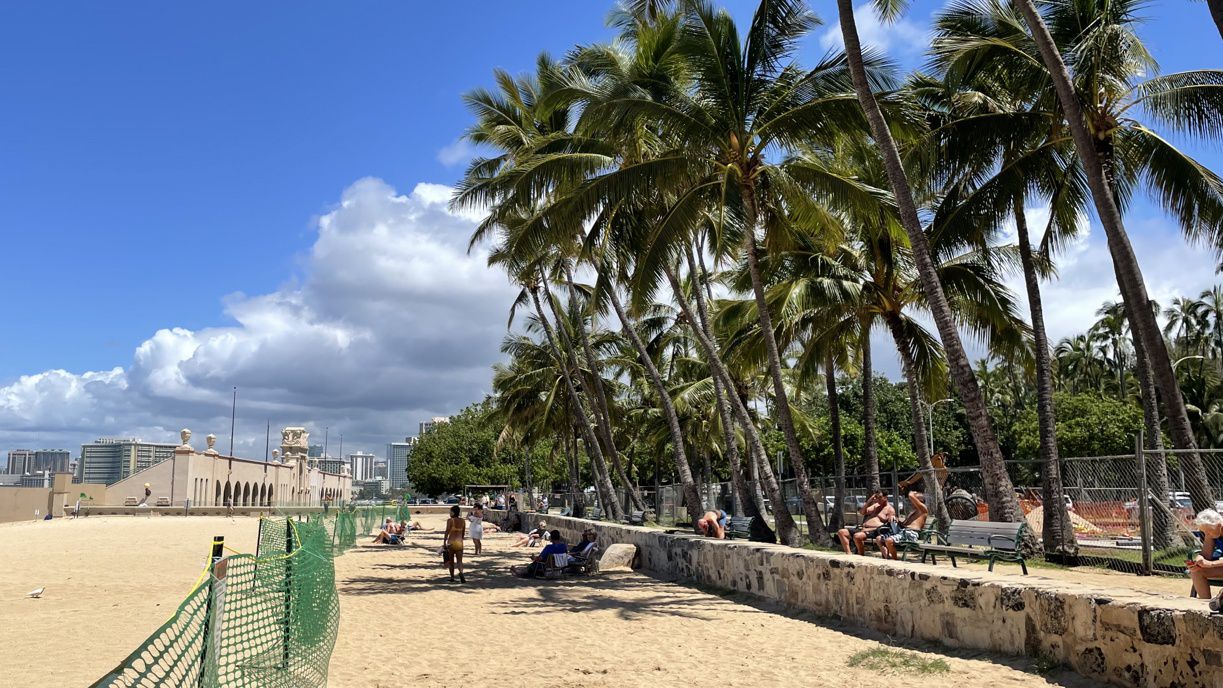
The monk seal mom will nurse, bond and teach skills to her unnamed pup at Kaimana Beach for five to seven weeks. As the pup grows, the seals will start to explore their surroundings.
In the past, officials have expanded and contracted the fencing around the seals as they move around. This year, they decided to start with a larger perimeter to make the off-limits area clearer to visitors, according to Diana Kramer, Regional Marine Wildlife Response Coordinator for NOAA Fisheries, who spoke at a news conference on Thursday.
The precautions are being put in place because Hawaiian monk seals are one of the most endangered seal species in the world, and each new pup is considered vitally important to the survival of the species. The Hawaiian monk seal is also part of Native Hawaiian’s creation story, the Kumulipo, and Hawaiians consider the seals to be kupuna (ancestors).
The seals can also become habituated to humans, according to Kramer. For the pup, there is a risk that it will become too habituated and will not learn how to survive in the wild.
Along with protecting the seals, the fencing and other regulations are meant to protect people. In 2022, a visitor from California was swimming too close to another monk seal, Rocky, and her pup. The mother seal attacked the swimmer.
“Monk seal mothers, like all mothers, are protective of their young and they have bit and injured swimmers when they perceive them as a threat,” said Kramer.
Kramer urged the public to visit other beaches during the seals’ nursing period.
This is the fourth time a monk seal has given birth at the popular Kaimana Beach since 2017. Rocky, another monk seal mom, gave birth twice at the beach. In 2021, Kaiwi gave birth for the first time at Kaimana Beach.
While it might be surprising to some that the monk seal mothers are using Kaimana Beach to give birth and nurse their pups, Kramer described it as an ideal environment for the seals as the waters are protected and calm, and there is ample sandy space where they can rest.
Michelle Broder Van Dyke covers the Hawaiian Islands for Spectrum News Hawaii. Email her at michelle.brodervandyke@charter.com.

